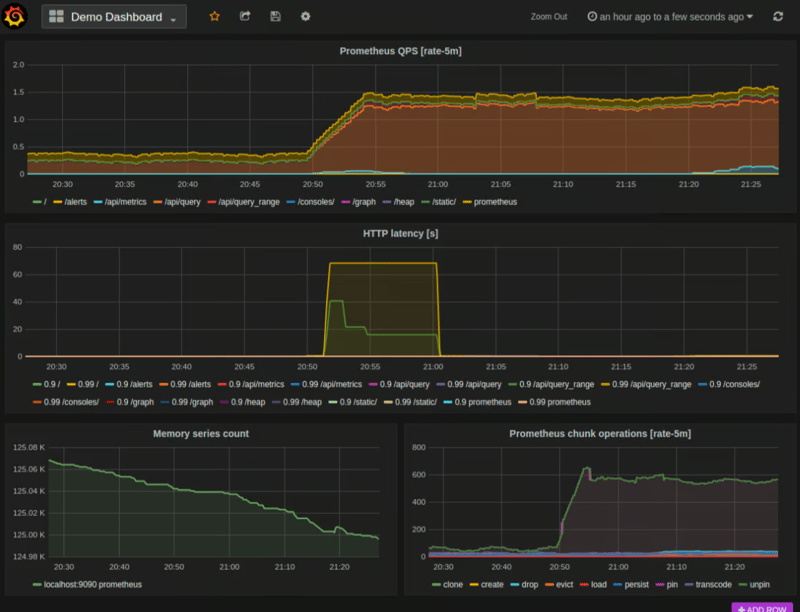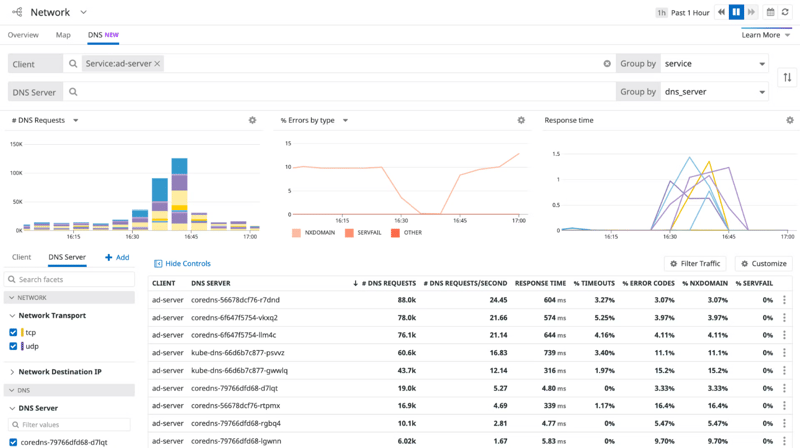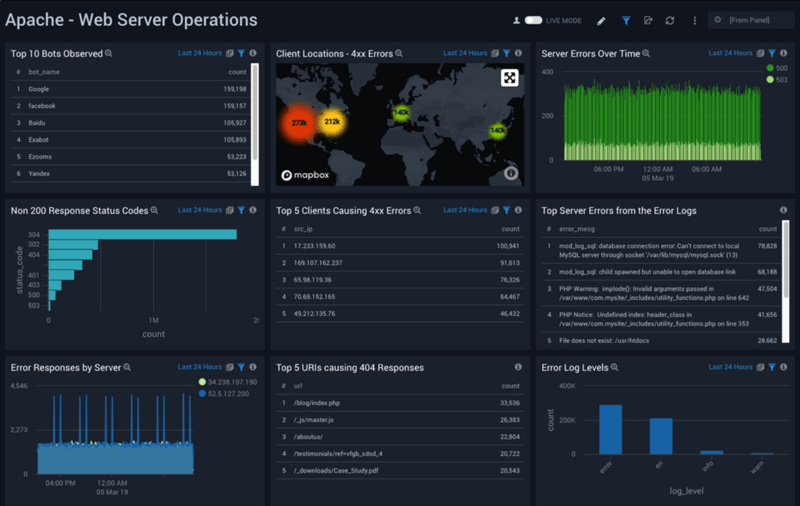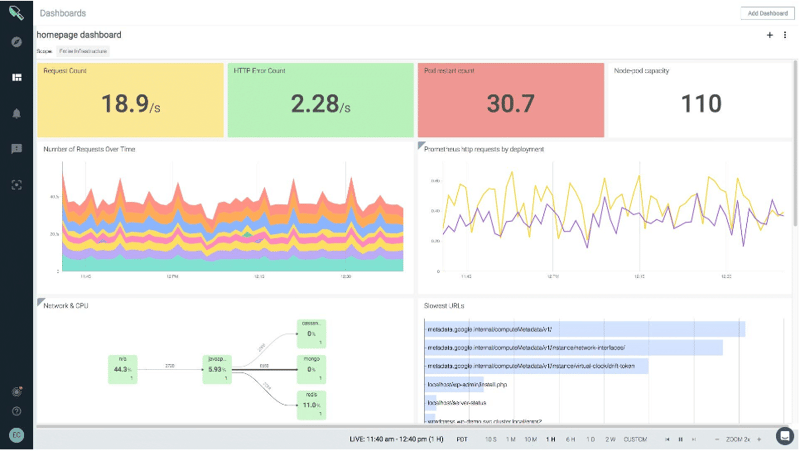Top 5 Docker Container Monitoring Tools in 2024

Opuama Lucky
Posted on March 24, 2024

Monitoring tools assist DevOps teams in swiftly detecting and resolving performance issues. As Kubernetes and Docker gain popularity, it becomes imperative to establish robust container monitoring and log management processes from the outset.
However, this task is not without its complexities. Monitoring Docker containers entails a detailed process, starting with the development of a well-thought-out plan and culminating in the implementation of a suitable monitoring system. In this post, we will delve into the fundamentals of container monitoring and highlight its importance. Furthermore, we will conduct a comprehensive analysis of the top container monitoring tools available in the market.
What is container monitoring?
Before digging deeper, it's important to understand the concept of a container.
What is a container? A container is a standardized software unit that encompasses both code and its dependencies. This encapsulation enables software developers to create programmes that can handle the issues that come with running cross-platform apps. In essence, containers are software packages that include all of the necessary components for running applications seamlessly across a variety of settings.
A Docker container image is a standalone, executable software package that includes everything required to run an application. To convert an image into a container, run it through Docker Engine. Programmers who take this approach and avoid unwittingly holding back their applications, create versatile systems.
Container monitoring is a simple procedure for verifying the performance of your apps built on microservice architectures by collecting and analysing your application's performance information. Containers are more difficult to monitor than traditional apps because they are temporary.
Why do we need to Monitor Docker Containers?
Without monitoring, it's difficult to understand how containers use resources efficiently. Monitoring assists resource optimization by identifying performance bottlenecks and ensuring that infrastructure resources are used optimally.
In today's world, achieving user expectations includes providing programmes that work seamlessly. However, ensuring a high-quality user experience necessitates ongoing maintenance and performance monitoring. Monitoring Docker containers is critical because it gives real-time information about the performance, health, and behaviour of containerized applications.
Additionally, monitoring Docker containers allows you to discover and manage any security threats.
How to monitor your containers
Container monitoring is similar to monitoring other types of deployments in that both require metrics, logs, health checks, and service discovery.
Nevertheless, container monitoring is more difficult due to its multi-layered and dynamic nature. However, a user-friendly container monitoring system can help you swiftly navigate through all of its layers. Simply select the best tool for your specific situation.
Here is a list of the top five Docker monitoring tools you should be aware of.
Top 5 Docker Container Monitoring Tools
- Prometheus
- Datadog
- Sumo Logic
- Sysdig
- Dynatrace
Prometheus
Prometheus is an open-source monitoring and alerting toolkit. It is designed to monitor highly dynamic containerized systems, making it an excellent choice for monitoring Docker containers and Kubernetes clusters.
Prometheus allows you to collect and store metrics as time-series data, which means that each data point is associated with a timestamp and optional key-value pairs known as labels.
Prometheus employs its own PromQL query language, collects time series using a pull model over HTTP, and pushes data through an intermediary gateway. It allows for a variety of ways to visualise data. Prometheus is typically deployed alongside Grafana since it provides out-of-the-box support.
Features of Prometheus
- Easily scalable
- Integrates with Grafana
- Stores time-series data
- Supports various service discovery mechanisms, including DNS-based discovery
- Follows a pull-based model
Datadog
Datadog is a platform for monitoring applications and services. To create a full-stack monitoring suite, it combines Docker monitoring with application, server, and network monitoring.
The Datadog platform is a good option for a Docker container monitoring system since this application can keep an eye on servers, networks, and apps, giving it a complete picture of everything that goes into a Docker container.
Furthermore, the service may provide application dependency maps indicating which services employ containers and which use Docker. When any component of your IT infrastructure exhibits performance concerns, you may quickly do a root cause investigation using this information.
Datadog NPM helps detect if your network is to blame for slow traffic or low connectivity before your applications are harmed, ensuring a smooth travel experience for you.
Features of Datadog
- Supports auto-discovery
- Tracks container creation and destruction
- Integrations and Ecosystems
- Log Management and Analytics
- Application Performance Monitoring
Datadog is available in four editions: infrastructure, APM, log management, and synthetics.
Sumo Logic
Sumo Logic offers centralised, container-aware log management, allowing for correlation of container events, configuration data, and host and daemon logs. Sumo Logic's log management system is available in cloud, on-premises, and hybrid settings.
Log centralization allows you to create many dashboards, view all of your monitors at once, correlate issues, and perform root-cause analysis using machine learning.
Furthermore, Sumo Logic provides security and compliance management. Because of its log analysis capabilities, it identifies threats quickly, aids in breach detection, and integrates with other threat intelligence solutions.
Predictive analytics, anomaly detection, and outlier identification provide detailed insights into the performance of your design. Sumo logic provides real-time visibility into cloud apps and infrastructure across AWS, Azure, and GCP.
Features of Sumo Logic
- Machine Learning and Anomaly Detection
- Log Management
- Integration with Cloud Platforms
- Real-Time Analytics
- Dashboards and Visualizations
Sysdig
Sysdig is a leading container monitoring and security technology that provides detailed visibility into containerized environments. Sysdig provides Docker monitoring, security, and forensics technologies that allow you to obtain a comprehensive understanding of containers, manage vulnerabilities and security risks, and troubleshoot and do forensic analysis. Sysdig provides sight within your containers from the outside, using a single agent per server. It automatically identifies containers and collects metrics and events. Sysdig can scan your photos, identify threats, and monitor compliance.
You can resolve issues faster by utilizing container data from system calls that have been augmented by the Kubernetes context. In addition, Sysdig makes it easier for you to consolidate data across various teams for Docker monitoring. It also provides developers with a familiar tool while eliminating the management issue. Sysdig can measure up to millions of metrics with long-term storage and a single backend. How impressive.
Features of Sysdig
- Open-Source Foundations
- Forensic Analysis
- Container-Level Visibility
- Anomaly Detection
Dynatrace
Dynatrace is a full-stack observability solution that provides a user-friendly method for monitoring Docker container metrics and logs. Dynatrace, like the Docker stats tool, allows you to examine the container resource utilization on several hosts. You can also examine Docker data such as RSS, CPU utilization, and the total duration of time that a container's CPU consumption has been attacked.
Dynatrace provides automation and AI technologies for container platforms, including Kubernetes, OpenShift, Cloud Foundry, and Docker. Dynatrace allows you to achieve full-stack observability and monitor the availability, health, and resource utilization of your containerized infrastructure. You can keep track of all the crucial metrics by following pre-defined rules or building your own to monitor specific metrics. All the data collected will be visualised. Dynatraces AI offers continual mapping of dependencies and auto-discovery.
Features of Dynatrace
- Application dependency mapping
- Container discovery
- Highly visual and customizable dashboards
- AI-Powered Observability
- Real User Monitoring (RUM)
Conclusion
The landscape of Docker monitoring tools features an extensive selection of solutions that adapt to the changing needs of modern IT settings. DevOps engineers want comprehensive monitoring, tracking, and logging systems that include advanced features such as trace, metric, and log correlation.
These technologies are critical in helping organizations gain full visibility, proactive monitoring, and effective Docker container management. The best monitoring solution will be based on the tools we now have, the issues we confront and the needs we have.

Posted on March 24, 2024
Join Our Newsletter. No Spam, Only the good stuff.
Sign up to receive the latest update from our blog.
Related
November 27, 2024






